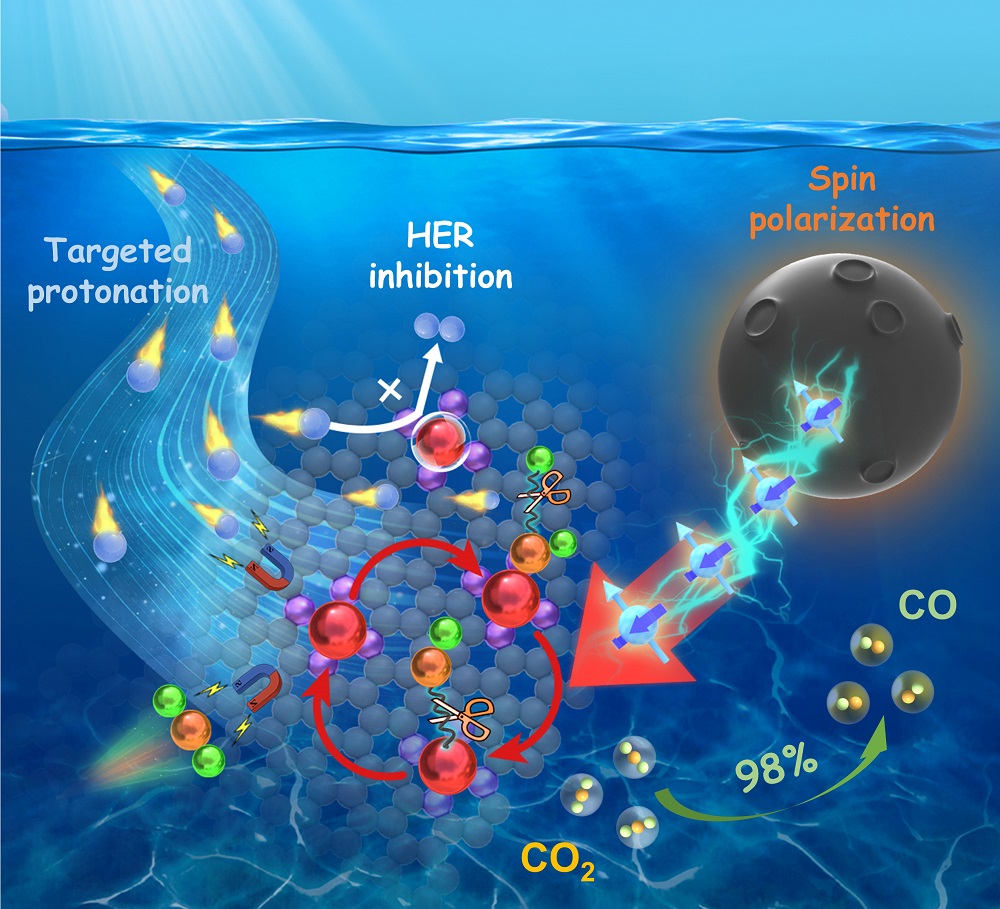Electrocatalytic performances of Fe
3C-X@Fe-NCs and Fe-NC are presented in Fig.4. From on-line gas chromatography, gas product comprises only CO and H
2 (Fig. S20, cf. ESM), and no liquid product is detected by off-line
1H nuclear magnetic resonance (Fig. S21, cf. ESM). Fe
3C-L@Fe-NC exhibits an impressively wide potential window for FE
CO > 90% from –0.34 to –0.64 V, spanning almost kinetics- and transfer-controlled region; the maximum reaches 98.1% at –0.4 V. By comparison, that of Fe
3C-M@Fe-NC, Fe
3C-S@Fe-NC and Fe-NC is 91.9%, 84.7% and 77.0%, respectively (Fig.4(a)). Once the Fe-N
x sites are poisoned by SCN
–, Fe
3C-L@Fe-NC and Fe-NC suffer severe performance damage (Fig. S22, cf. ESM). Moreover, FeC@C has near-zero FE
CO; NC has a maximal FE
CO of only 58.1% with negligible current (Fig. S23, cf. ESM). These results confirm that Fe-N
x is the actual active center and Fe
3C itself is the spectator, and also that the co-existence of atomic Fe and nanostructured Fe
3C is essential for efficient CO
2 electrolysis. Fe
3C-X@Fe-NCs possess larger electrochemical active surface area (Fig. S24, cf. ESM) and smaller charge-transfer resistance (Fig. S25, cf. ESM) than Fe-NC. Among all the catalysts, Fe
3C-L@Fe-NC responds most sensitively to CO
2RR, as seen from the clearest cathodic peak and the lowest onset potential of –0.20 V for CO yielding (Fig. S26, cf. ESM). Tafel plots uncover the distinct kinetics (Fig. S27, cf. ESM): Fe
3C-L@Fe-NC experiences the fastest CO
2 activation step to generate
, explaining its lowest onset overpotential, followed by Fe
3C-M@Fe-NC and Fe
3C-S@Fe-NC, whereas Fe-NC suffers from the first PCET slow and rate-limiting [
33]. For Fe
3C-L@Fe-NC, the CO partial current density (
JCO, Fig.4(b)) and the turnover frequency (TOF, Fig.4(c)) at –0.7 V are 3.5 mA·cm
–2 and 193 h
–1, respectively, 3.5 and 16.1 times higher than Fe-NC—the optimal A/N-Fe configuration of Fe
3C-L@Fe-NC determines its order-of-magnitude enhancement in intrinsic activity. Marvelously, this hybrid catalyst with ultrahigh FE
CO at low overpotentials of 270‒310 mV even surpasses manifold state-of-the-art M–N–C SACs (Fig.4(d); Table S3, cf. ESM). Fe
3C-L@Fe-NC also keeps robust during 24 h continuous electrolysis, with steady current density (decay < 5%) and nearly constant FE
CO (~97%) (Fig.4(e)), which is not shared by Fe-NC (Fig. S28, cf. ESM). After durability test, A/N-Fe pairs are still preserved intact (Fig. S29, cf. ESM).











